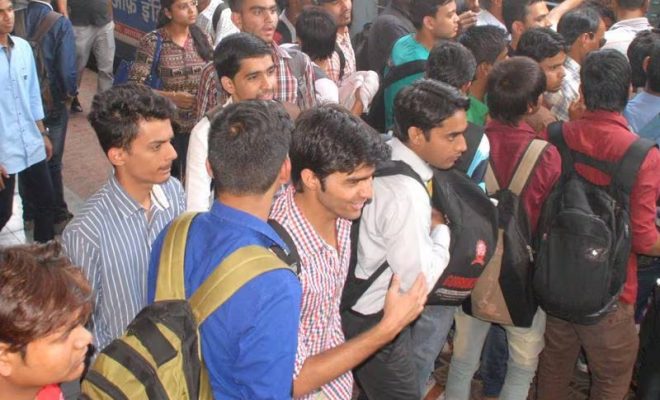Unveiling the Truth Behind India’s Youth Unemployment Crisis

The latest report by the International Labour Organization (ILO) and the Institute for Human Development (IHD) sheds light on the dire state of unemployment among India’s youth. According to the India Employment Report 2024, a staggering 83% of the country’s unemployed population comprises young individuals.
Rising Share of Educated Youths in Unemployment
Over the years, there has been a significant increase in the proportion of educated youngsters among the unemployed, rising from 54% in 2000 to 66% in 2022. This surge highlights a concerning trend where educated youth struggle to secure meaningful employment opportunities.
Gender Disparity in Unemployment
The report also underscores the gender disparity prevalent in India’s job market. Interestingly, there are more women (76.7%) than men (62.2%) among the educated but unemployed youth. This finding sheds light on the unique challenges faced by young women in accessing gainful employment.
Impact of the COVID-19 Pandemic
The COVID-19 pandemic exacerbated the unemployment crisis, leading to a decline in employment and underemployment among youngsters. While the years preceding the pandemic witnessed a steady rise in youth employment, the subsequent years saw a noticeable downturn, further exacerbating the challenges faced by the youth.
Policy Imperatives for Addressing Unemployment
In light of these alarming statistics, policymakers must prioritize five key areas for action:
1. Promoting Job Creation
Efforts should be made to stimulate job creation across various sectors, fostering economic growth and providing employment opportunities for the youth.
2. Improving the Quality of Employment
It is imperative to focus on enhancing the quality of employment, ensuring that youth have access to stable and rewarding jobs that align with their skills and aspirations.
3. Addressing Inequalities in the Labour Market
Measures must be implemented to address inequalities prevalent in the labour market, particularly those affecting marginalized communities and women.
4. Strengthening Skills and Active Labour Market Policies
Investments in skill development programs and active labour market policies are essential to equip youth with the necessary skills and resources to succeed in the workforce.
5. Bridging Knowledge Deficits on Labour Market Patterns
Efforts should be made to bridge knowledge gaps and enhance understanding of labour market dynamics, enabling policymakers to formulate evidence-based interventions to tackle youth unemployment effectively.
Shifting Perspectives on Government Intervention
While unveiling the report, Chief Econohttps://indiaobservers.com/kangana-ranauts-u-turn-a-tale-of-twists-and-turns/mic Adviser (CEA) V Anantha Nageswaran emphasized the need to shift perspectives on government intervention in addressing social and economic issues. He stressed that the onus lies not solely on the government but also on the commercial sector to drive hiring and economic growth.
Also Read | Kangana Ranaut’s U-turn: A Tale of Twists and Turns
Political Response to the Unemployment Crisis
The report’s findings have sparked political debate, with opposition leaders, including Congress national president Malliakrjun Kharge, criticizing the Narendra Modi government over its handling of the unemployment crisis. With unemployment emerging as a key electoral issue, political parties are under pressure to propose viable solutions to tackle the youth unemployment epidemic.
The India Employment Report 2024 underscores the urgent need for comprehensive action to address the youth unemployment crisis plaguing the nation. By prioritizing job creation, enhancing the quality of employment, and bridging inequalities in the labor market, policymakers can pave the way for a brighter future for India’s youth.



